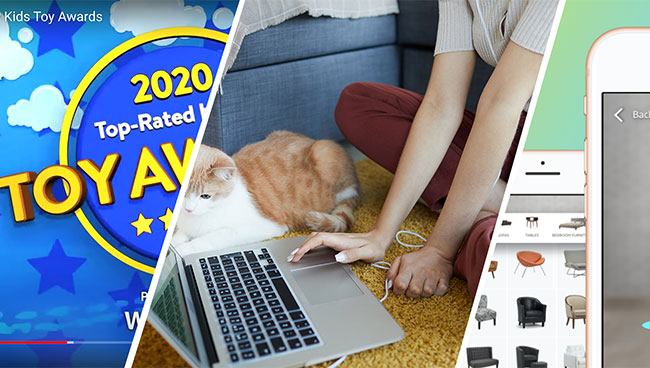So far, e-commerce has gotten away with just being fast and functional. But in this pandemic, as more shoppers gravitate toward online purchases out of necessity or convenience, it needs to prove it can connect with shoppers more personally. Here are two common-sense ways retailers and brands can engage emotionally, with insights derived from WSL’s How America Shops® survey results.
E-commerce Needs to Be Better at Connecting
It may seem like an odd thing to say as online retail has become so successful (and efficient) during the pandemic, but shoppers are really missing emotional connections, even online.
Yet a lot of e-commerce retailers are overlooking the big opportunity to personalize the experience through messaging and presentation. This is the exact time to do that because shoppers who are spending more time and money online expect better experiences. Retailers and brands that fail to balance e-commerce’s “get-it-done” efficiencies with engaging features, for when shoppers are ready immerse themselves, will soon lose their interest.
Based on what we’ve seen through our own research, and as discussed on our recent WSL Future Shop podcast, “There is No Going Back,” retailers can accomplish emotional connection in two key ways.
Method 1: Make the Brand Personalities Come Alive
As Craig Dubitsky, founder of Hello products, told us recently: Retail is a product, and that product typically is an experience – in-store and online.
Yet too often, when goods make the trip from the store aisle to the computer screen, they transform into something flat and unexciting. In the store, shoppers can navigate an assemblage of categories, colors and signage that together form a pattern of information and connection. Online, each product stands in isolation, over-sanitized, and hard to tell part.
An online product experience that is engaging is typically easier to shop. Our surveyed shoppers ranked Amazon as easiest to shop among a cross-section of online retailers. So we looked beyond its typical click and buy and found the Amazon app which brings products virtually alive via augmented reality and helps users see how products would look in their home. If a shopper is looking for a crockpot, for example, the app will enable them to place pictures of crockpots in different areas of their home or apartment. Viola!
Walmart enhances its products and categories with scrolling, magazine-quality images of the new iPhone, beauty products and its “2020 Toys Awards” video – they’re not just flat, one-dimensional images. Walmart — and Target too — include a variety of images of the products sold, (even basics such dishwashing liquids and surface cleaners), with environmental images and in-use videos. It’s expected to see videos of products such as Roombas and hiking boots, but now videos of household cleaners are becoming more common.
Method 2: Make Online Shopping an Adventure
Retail sites that incorporate unexpected elements of surprise engage shoppers longer and therefore are more likely to generate sales. And the opportunity at this moment is rich: 41% of shoppers told us that buying the things they need online is more important now than before the pandemic.
Of course, these elements depend on the category and reason for the online shopping trip. But where it makes sense, retailers can retrofit the best features of shopping in the store – such as human interactions, the inspirations of displays and end caps – to generate emotional reactions online.
Ikea has raised this bar by transforming its home page into a digital magazine-like experience. Tagged “Explore Something Special,” the site presents Ikea’s products not as categories but as lifestyle solutions viewers are invited to explore. Among the features are “How to work from home without a home office,” “8 finds for a feel-good, eco-conscious bedroom” and “12 little weekend projects.” These features are complemented with videos and sideways-scrolling content, to duplicate the page-through experience of a magazine.
And Levi’s brings in-store adventure to its digital space through its video-enhanced Tailor Shop, which present fun ways clothing can be embroidered, digitally patterned and distressed to personally meet the shopper’s preferences. Further, its “Jeans Guide & Denim Dictionary” details the various kinds of jeans it makes, from super skinny to loose fit, and what makes each fit unique – modeled on a variety of body shapes.
Online Retail Sites Need to Recognize the Shopper
Online, retailers and brands have done really well at being quick and efficient. The process has not only made it easier to get items “off the list” so shoppers can move on to other things, but has saved them in these days of the pandemic. However, that is not enough – now, or for the future. It’s time online retail starts connecting with shoppers emotionally.
Want to learn more? You can listen to WSL’s Future Shop podcasts, “There is No Going Back,” “Humanizing Brands, Retail and Corporate Culture” and more, here.


